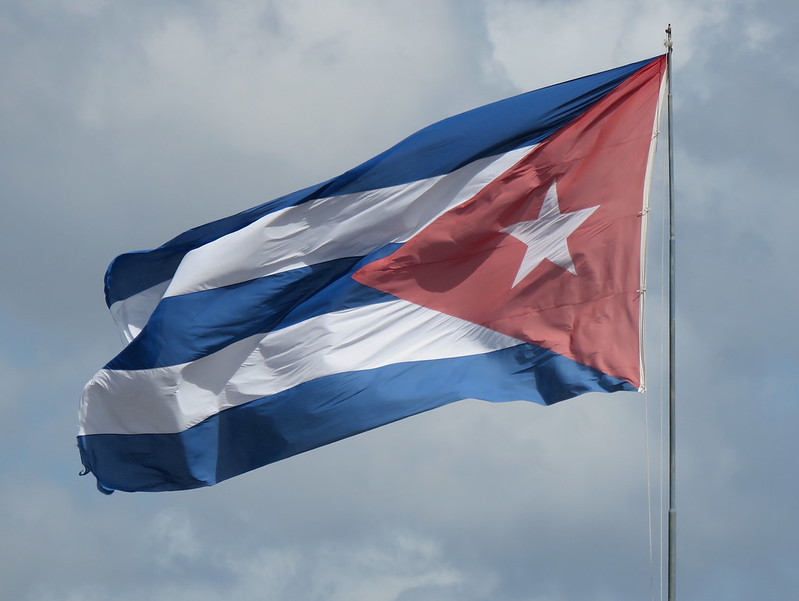HIV/AIDS in Cuba
 According to UNAIDS, in 2022, 42,000 people lived with HIV/AIDS in Cuba. Although the disease has claimed many lives since its discovery and initial cases, the threat has reduced significantly through Cuba’s handling of the pandemic. “Cuba’s national AIDS program is the most successful in the world based solely on statistics,” according to a research article by Sarah Z Hoffman published in 2004.
According to UNAIDS, in 2022, 42,000 people lived with HIV/AIDS in Cuba. Although the disease has claimed many lives since its discovery and initial cases, the threat has reduced significantly through Cuba’s handling of the pandemic. “Cuba’s national AIDS program is the most successful in the world based solely on statistics,” according to a research article by Sarah Z Hoffman published in 2004.
The First Cases
Cuba noted its first case of HIV/AIDS in 1985 — a heterosexual male returning from travel abroad. The country’s leading infectious disease specialist, Dr. Jorge Perez, spearheaded a drastic approach to contain the spread by destroying all foreign-sourced blood products while also commissioning a National AIDS foundation before the first reported death of AIDS in 1986. Cuba’s strategy continued to differ drastically from many countries, with many of its protection regulations already being sanctioned and declared lawful through existing health regulations. Decree-Law 54 for example, stated for the prevention of such diseases, individuals suspected of suffering from a communicable disease would be subject to immediate isolation and quarantine from the public and potentially infected individuals would need to suspend or limit their daily activities.
The Strategy
While many view Cuba’s approach to the pandemic as barbaric or controversial, Cuba’s stratagem has been the most effective in the world based on statistics. The United States caseload of HIV/AIDS infected persons was 10 times higher than Cuba, which had reported 1,177 back in 2003. In July 1983, the Ministry of Public Health in Cuba published an article stating that the Ministry itself would oversee the determination of which diseases pose a risk to the community as well as the adoption of diagnostic and preventative measures to contain the spread of the outbreak, reduce transmission and present options for mandated treatment.
From 1986 to 1994, the Cuban Government utilized these regulations to lawfully quarantine HIV-positive individuals in sanatoriums built and maintained by the Ministry. While these facilities were isolated from the general populace, the sanatoriums provided food, shelter, medication and education on the dangers of contraction and the importance of honesty, healthy behaviors and safe sex practices. The Cuban government rescinded this law in 1994 and relaxed mandated isolation protocols. However, the government required persons testing positive for HIV/AIDS to stay in a sanatorium for approximately eight weeks to receive thorough education on the disease. The government permitted people who completed their eight-week programs to leave and allocated a general care physician to help each person manage their conditions.
Today
Every year, a total of 1.4 million mothers living with HIV become pregnant. While untreated, they risk a 15-45% chance of transmitting the infection to their infant during pregnancy, labor or breastfeeding. Since 201, the WHO (World Health Organization) has partnered with Cuba and other countries in the Americas to implement a region-wide system that will virtually eliminate mother-son transmission of HIV and syphilis. This effort is achieved through rigorous HIV testing for both pregnant women and their partners. Cuba’s nationwide health care access makes this easy for mothers who may test positive to receive treatment and education to continue their daily routines without fear or transmission.
According to PAHO Director Dr. Carissa Etienne; “Cuba’s success demonstrates that universal access and universal health coverage are feasible and indeed the keys to success. Even against challenges as daunting as HIV.” In 2014, The WHO and supporting partners published an article titled “Guidance on global process and criteria for validation of elimination of Mother to Son transmission of HIV and Syphilis,” which outlined the requirements and the specificity of different indicators each country needed to meet to validate such elimination.
The Lesson
While many have critiqued Cuba’s HIV/AIDS management strategy, Cuba’s stratagem has been unlike any other implemented across the globe, with almost unprecedented results. As of today, only one sanatorium remains open. With quarantine and isolation laws no longer in place, the remaining sanatorium has become a hospital and a clinic for those who seek extensive HIV treatment by their own choice. With global health care, worldwide attention and universal access to everyone, the world can win the fight against HIV/AIDS. Everyone can be helped and everyone can be treated, regardless of financial means or societal status.
– Anthony Durham
Photo: Flickr
